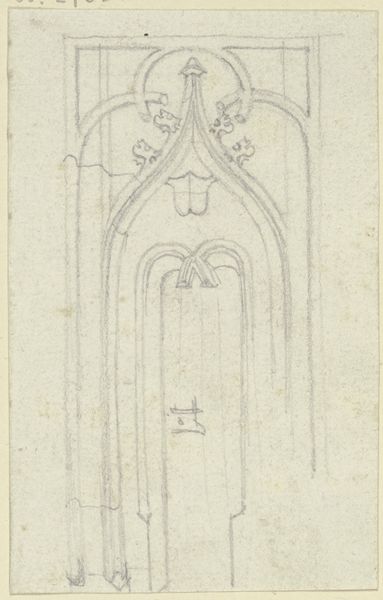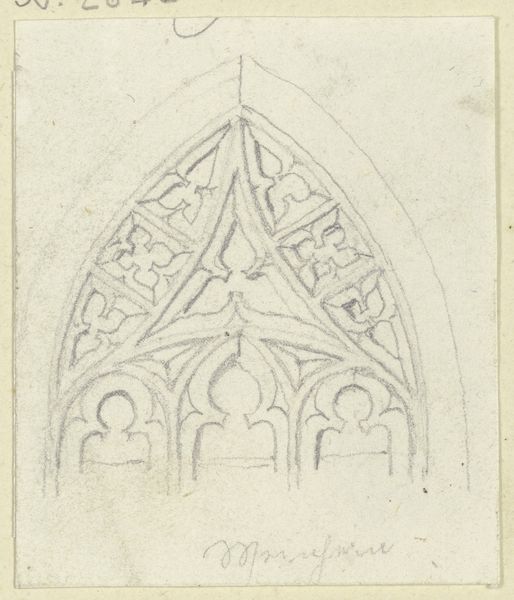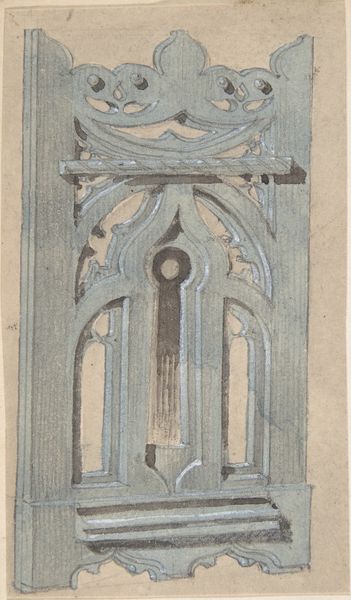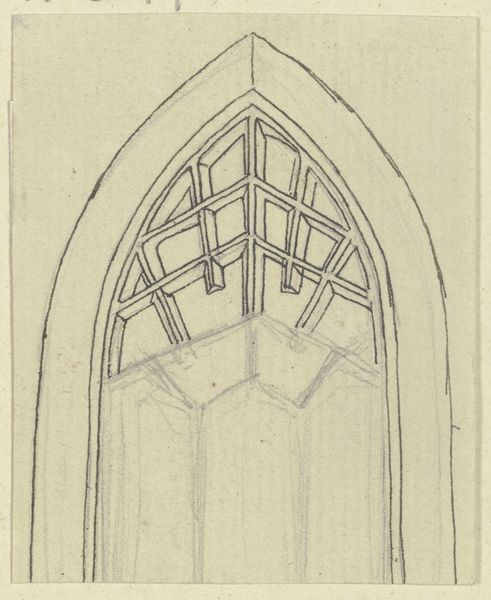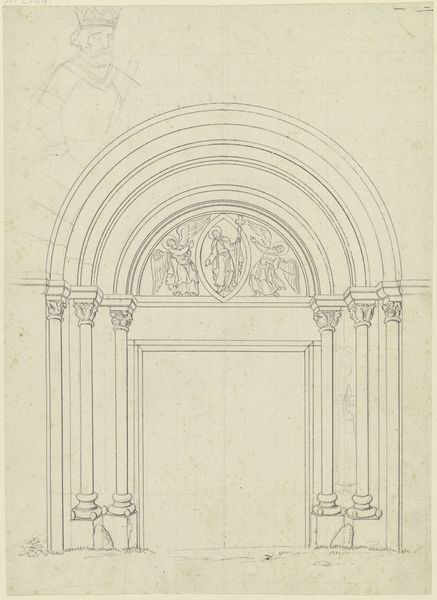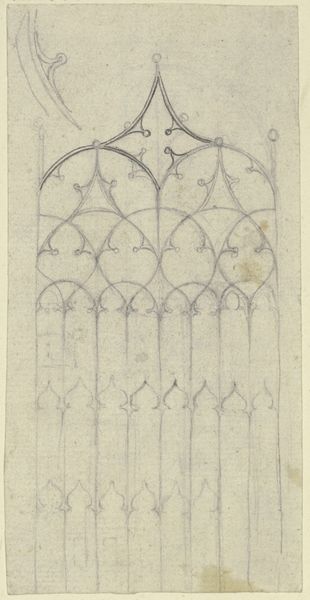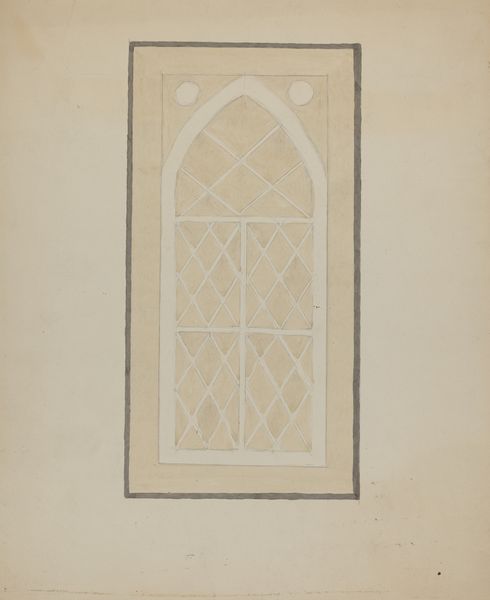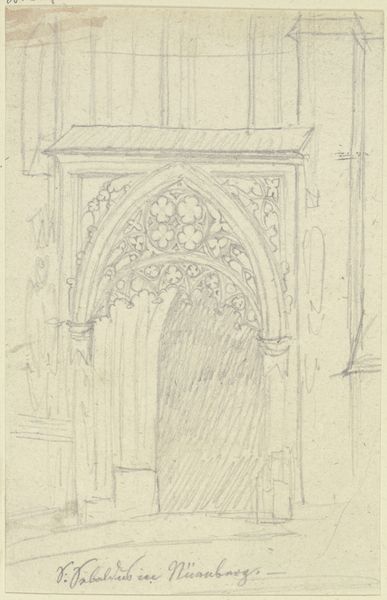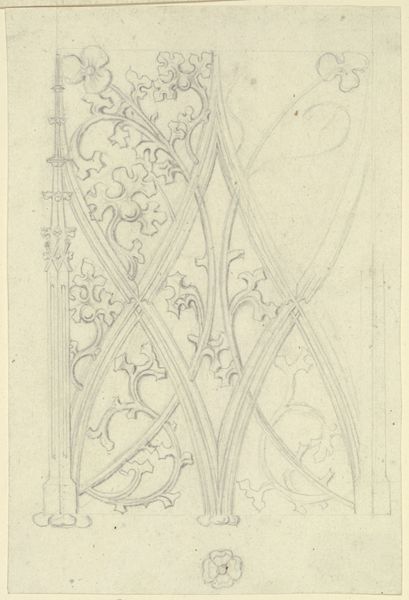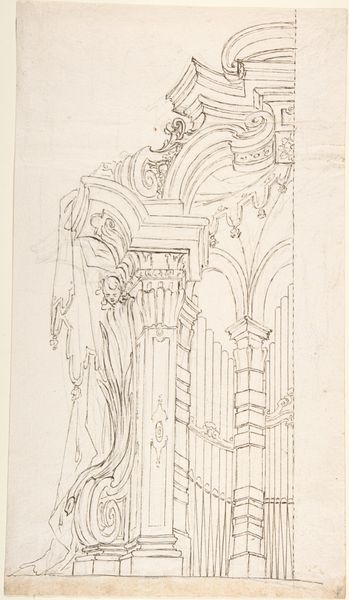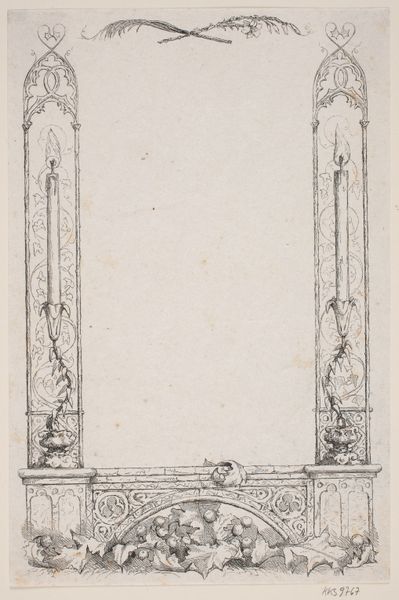
drawing, paper, architecture
#
drawing
#
aged paper
#
toned paper
#
homemade paper
#
16_19th-century
#
parchment
#
old engraving style
#
retro 'vintage design
#
paper
#
personal sketchbook
#
german
#
old-timey
#
golden font
#
sketchbook art
#
architecture
Copyright: Public Domain
Curator: Looking at this subtle graphite drawing of a "Gothic wall tabernacle," I immediately notice its serene yet strong presence. The meticulous lines detailing the pointed arches and delicate tracery remind me of the cathedrals reaching toward the heavens. What's your first impression? Editor: The architectural sketch certainly has a spectral feel to it. Ballenberger is the name assigned to this, although it has a very haunting mood to me. Considering the gothic architectural element depicted on a vintage-style paper – one ponders who lived within or beneath the illustrated tabernacle. Curator: It evokes layers of historical symbolism doesn't it? Notice the careful emphasis given to the arched window design. This isn't merely an architectural representation. It's a window to the divine. Gothic arches symbolize aspiration, acting as a visual metaphor for humanity's longing for something beyond the material world. What purpose did those walls serve, figuratively and literally, for the communities involved? Editor: I think it also begs questions regarding authenticity, both artistic and functional. Wall tabernacles during this period in the Städel Museum served as crucial elements within domestic and ecclesiastical settings, offering physical focal points for faith. Was this art commissioned? Or a way to make the architecture itself accessible to the average patron of that period? Curator: Those are exactly the right questions. What is so captivating is how it blends reality and artistic license within a social, artistic framework. It emphasizes architecture and religious beliefs with the power of imagery – reinforcing our understanding of social values and spiritual identities during the period. Editor: Yes, the function of imagery, and it raises an interesting question. What political purpose, for instance, might such idealized forms serve, particularly as society transforms through shifting economic structures? Who gets to experience the divine and how are those experiences framed and limited? Curator: The tabernacle serves as a visual language for remembering stories and beliefs and perhaps this is Ballenberger's purpose through illustration. As we come to a close, the piece embodies the fusion of architecture and faith. Editor: Absolutely, and it showcases the importance of asking how artistic traditions preserve and shape our social dialogue throughout history.
Comments
No comments
Be the first to comment and join the conversation on the ultimate creative platform.

